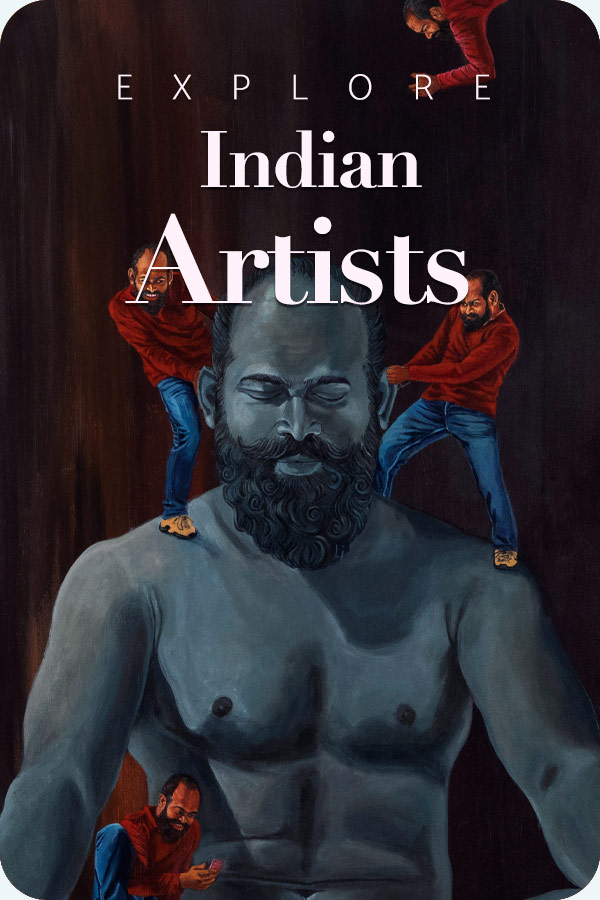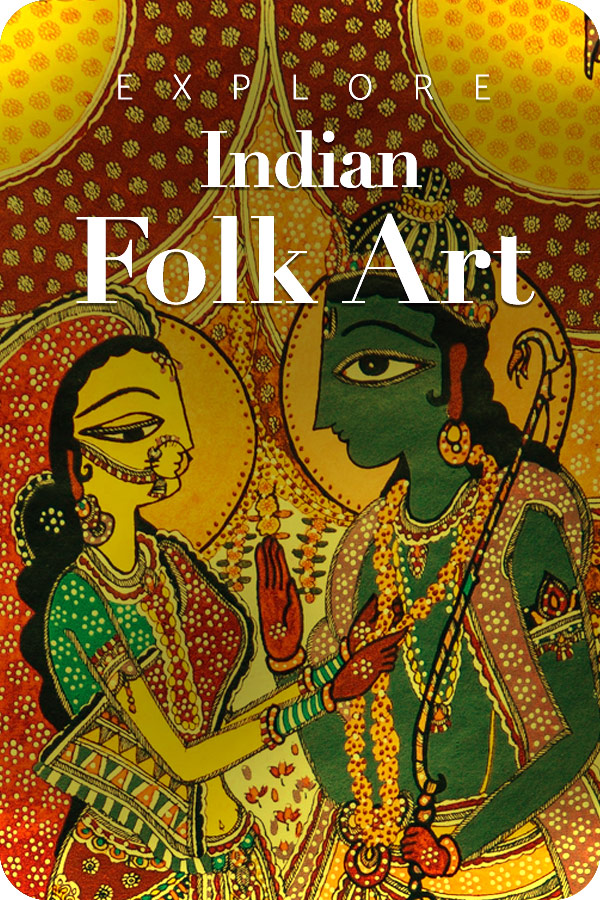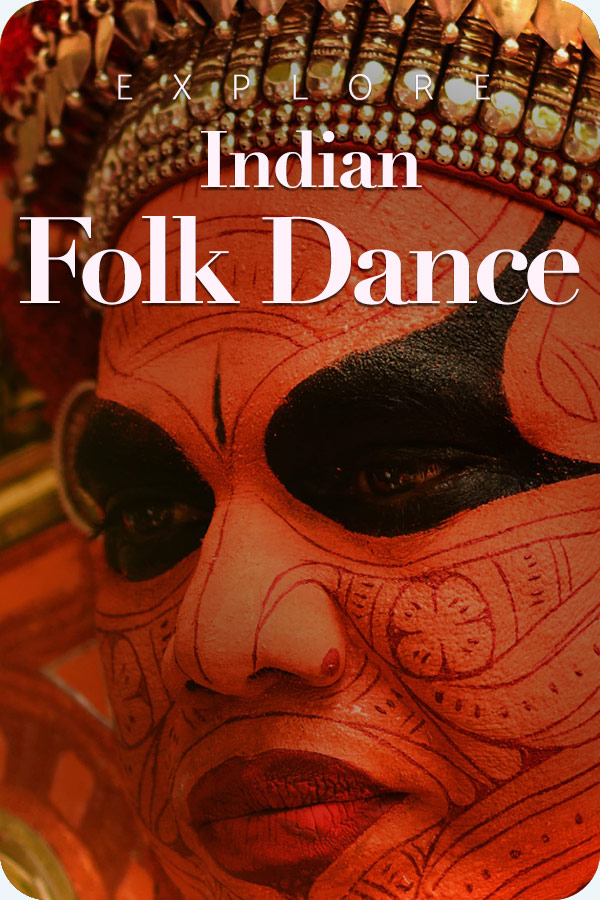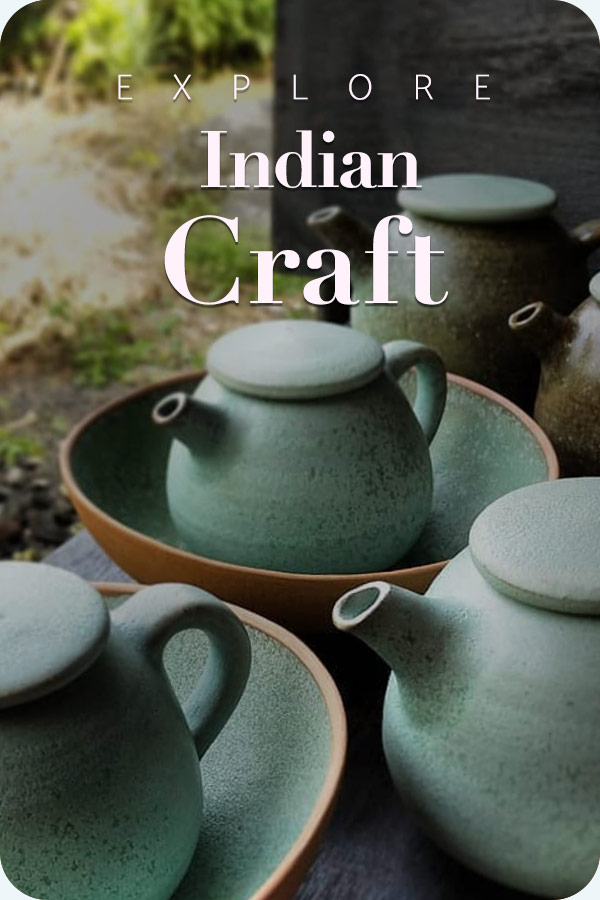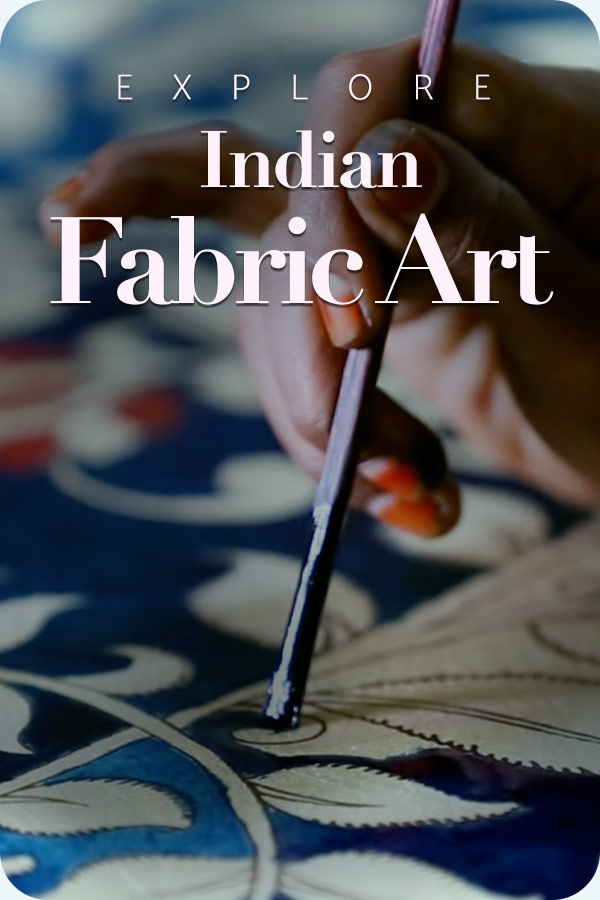Indian tribes are capable of producing from within their folds artistic gems that have been protected over generations but finally find an outward recognition in some form or the other. The Warli paintings, created by the Warli tribe, residing in the north Sahyadri Range is one such priceless folk art form that though carried on for years by the tribe has found fame, appreciation and usability in today’s modern times.

The biggest appeal of the Warli paintings is their simplicity. They essentially use very basic geometric shapes, the circle, triangle, square and dotted lines to construct and create magic on their mud walls. Even the color scheme is extremely simplistic, with the usage of white pigment as paint and a mixture of branches, earth and red bricks that act as the canvas or backdrop. Painted on walls and floors of their houses, the Warli paintings have long been an integral part of the tribe and are often compared to the cave art because of its antiquity and depiction of real life events.
Content in Warli Painting
The Warli painting unlike many other art forms in India do not always depict Gods, Goddesses or spiritual events. Instead they are characterized by the depiction of the social life of its painters, their lifestyle, occupation as well as deep respect and love for nature. Every day activities like drawing water from the well, fishing, hunting or dancing on the tunes of the tarpa are depicted with ease in the Warli paintings. However, their huge reverence for nature and all things natural is seen through the bird, flower and tree motifs that find a place in many of the paintings. Another recurring element is the Mother Goddess signifying fertility which is placed within the square called the ‘chalk’ or ‘shaukat’ as a central motif surrounded by natural objects or dance and festival celebrations.

Social events, such as, marriages, births and festivals have also found their due form of representation in the Warli paintings. The human figures and animals are represented by triangles, one inverse triangle placed on top of another other, with the larger triangle at the top signifying a man and a wider triangle at the bottom signifying a woman. Such simplistic approach to the paintings tends to give it a touch of animation at the same time the paintings manage to convey the authenticity of its depiction with absolute conviction.
However, no discussion on the content of Warli paintngs can be complete without mentioning the circular dance formation by the tribes using the tarpa as a musical instrument. This trumpet like instrument, usually played by a man who stands centrally surrounded by village men and women with entwined hands who move in the continuous circle as the music plays on is a symbolic Warli painting that highlights an essential cultural connection and ritual that the villagers follow with mirth and anticipation. The dancers follow the central music director and turn or change directions to the beat of the rhythm without ever showing their backs to the tarpa. This circle formation is often compared to the circle of life, hence proclaiming a very basic aspect of tribal culture – every dance form, song or ritual is always rooted in the pretext of a philosophy that involves the natural surroundings, nature and the larger understanding of life and living.
Out of the Shadows

In spite of Warli art being practiced for generations by the tribe, it was introduced to the world at large only in 1970’s. Prior to it the artists made the paintings in the confines of their homes and as a part of their personal cultural requirement. However, it was recently that Jivya Soma Mashe a talented Warli painter decided to break the norm and start painting for artistic pursuits rather than cultural or ritualistic reasons alone. The world hence needs to thank him for introducing this wonderful art form and bringing about basic changes, such as making the paintings on paper and hence increasing their longevity. What this managed to do was that it opened up a whole new market of art connoisseurs and innovators who were willing to experiment and use these paintings on different canvasses for different needs.
Contemporary Style and Usage
Today the Warli art finds expression on different commodities, such as, cushions, mugs, bags and even cell phone covers. The Fashion industry has taken an instant warm liking to these petite and simple paintings, and leading designers have used Warli paintings on their fabrics in major fashion shows. Warli painted saris are quite a sensation, and so are other clothing lines, such as, shawls, stoles, kurtis etc. that look smart and add a touch of cultural style to the garments. In fact, the paintings are easily generated using modern printing techniques on fabrics and the color scheme is no longer limited to a few handfuls of colors. Bright colors as well as even newer designs depicting modern amenities, such as, bicycles, roads and other urban surroundings have also found expression in the paintings.
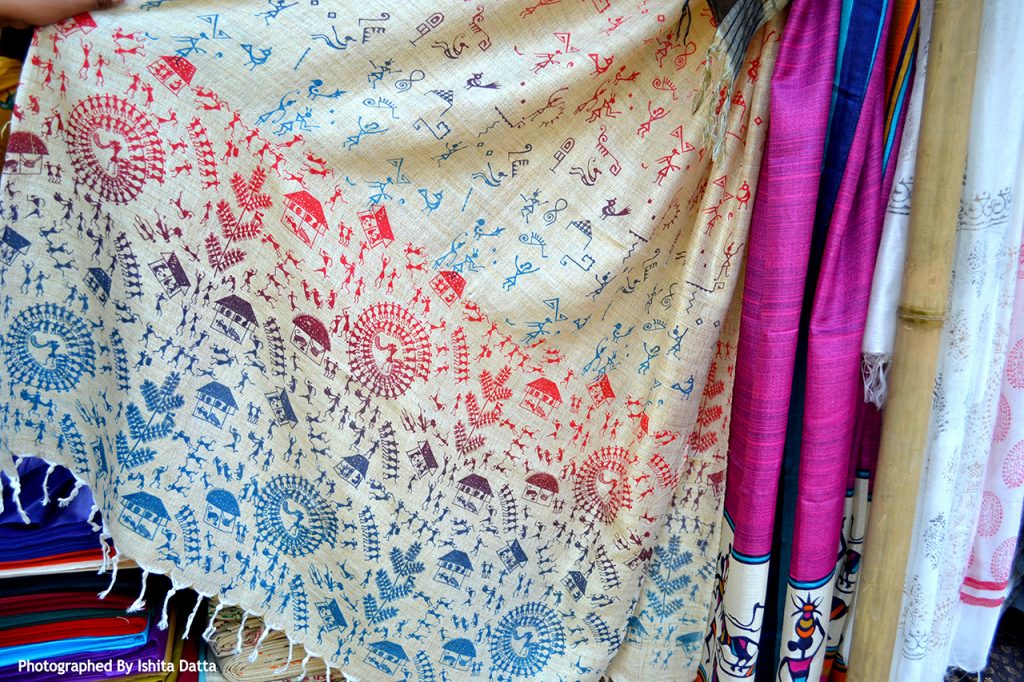
Warli art is one example of how tribal culture restored over generations finds acceptance, appreciation and even a drastic growth when exposed to the outside world. The Warli paintings are registered with Geographical Indication under intellectual property rights acknowledging the contribution of the tribe.
Warli paintings have now moved out successfully from the exclusivity of the tribe itself, featuring in schools, online courses as well painting classes. This spread of the cultural nuances of a particular tribe into the mainstream is an excellent example of how art crosses boundaries and time to remain pricelessly beautiful and timeless.


